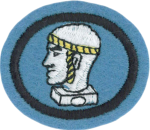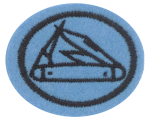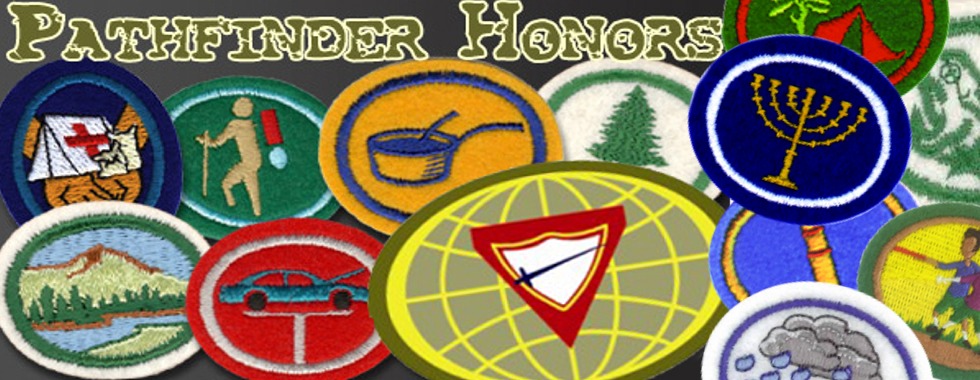
Scrapbooking, Advanced
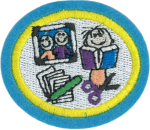
Category: Arts, Crafts, and Hobbies
Skill Level: 2
Original Honor: 2004
Adventsource Honors Handbook PDF
Originating Institution: North American Division
Requirements:
1. Have the Scrapbooking Honor.
2. What is lignin?
3. What plastic is safe to use in Scrapbooks?
4. What plastic is not and why not?
5. Describe the value of Scrapbooking to future generations.
6. How do you fix a journaling error?
7. Complete an album of at least 24 pages of a size not less than 8 1/2 x 11 using techniques that includes the use of at least 10 of the following:
Matting
Double Matting
Border Designs
Journaling Boxes
Colored Paper
Printed Paper
2 Page Layouts
Die Cuts
Self Designed Die Cuts
Stickers
Punches
Memorabilia Pockets
Decorative Scissors
Templates
Photos Cropped into circles or ovals
Sculpturing

Skill Level: 2
Original Honor: 1945
AdventSource Honors Handbook PDF
Originating Institution: General Conference
Requirements:
1. List the tools and materials used in simple sculpturing.
2. Model two or more examples of toy animals, using a sculpture medium.
3. Make a model of the human hand or foot, using a sculpture medium.
4. From a living model, make a statue “in the round” of the human head, using a sculpturing medium (not necessarily life size).
Silk Screen Printing
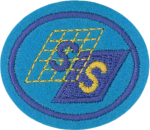
Skill Level: 2
Original Honor: 1974
AdventSource Honors Handbook PDF
Originating Institution: General Conference
Requirements:
1. List the tools and equipment necessary for silk screen printing.
2. Name three kinds of inks suitable for silk screen printing.
3. List at least three industrial uses of the silkscreen process.
4. Tell how bottles and round surfaces are printed.
5. Make a design, transfer the design to a screen, and screenprint one of the following projects:
a. At least ten greeting cards
b. At least three posters
c. Print a design on fabric
d. Comparable project of your choice
Silk Screen Printing, Advanced
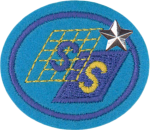
Skill Level: 3
Original Honor: 1974
Originating Institution: General Conference
Requirements:
1. Have the Silk Screen Printing Honor.
2. Properly stretch and secure silk screen fabric to a frame.
3. Know what fabrics can be used in silk screening and the advantages of each. What factors influence the choice of mesh count for the screen?
4. Understand and use each of the following silk screen printing techniques:
a. Hand cut film stencil method
b. Photographic method
c. Resist method
5. Use two of the following techniques in meeting requirement 4:
a. Print a design using two or more colors in proper registration
b. Print a repeat or all-over design
c. Print a three-color design using only two colors of ink
6. Print on a material other than paper or fabric, such as glass, metal, or leather.
Soap Craft
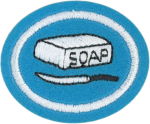
Skill Level: 1
Original Honor: 1964
AdventSource Honors Handbook PDF
AdventSource Catalog: Patch Order (must have approved order login) (link from AdventSource)
Wikibooks.org Article/Answer Key
Originating Institution: General Conference
Requirements:
1. What ingredients are used to make soap?
2. What is the difference between soap and detergent?
3. What causes the cleansing action of soap?
4. Write or tell a story about the history and origin of soap.
5. Name seven forms of soap.
6. What is scum?
7. Carve an object from a bar of soap.
8. Decorate a bar of soap for a gift.
9. Make a scene out of whipped soap, using at least three colors.
Soap Craft, Advanced

Skill Level: 2
Original Honor: 1964
Originating Institution: General Conference
Requirements:
1. Have the Soap Craft Honor.
2. What types of fats can be used in making soap?
3. What is used in making soap transparent?
4. What are the advantages and disadvantages of soap and detergent?
5. What are some cleaning aids added to soap mixtures?
6. What makes soap float?
7. What makes soap hard?
8. Learn the following verses: Jeremiah 2:22, Malachi 3:2.
9. Explain two methods of making soap. Make a batch of soap by one of these methods.
10. Do one of the following:
a. Visit a soap-making establishment, commercial or non-commercial.
b. Obtain information from a soap-making firm about how soap is made.
c. Study and prepare from an encyclopedia or another source a one-page to two-page report that explains how soap is made
Stamps
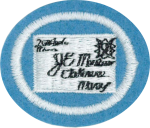
Skill Level: 2
Original Honor: 1933
Originating Institution: General Conference
Requirements:
1. Relate briefly the story of the beginning of the postal service in your country.
2. How is the history of your country told in postage stamps?
3. What are the rates for first-class mail in your country?
4. What country does not have its name on its stamps and why?
5. Know the meaning of the following:
a. Coil stamp
b. Booklet stamp
c. Perforations
d. Perforation gauge
e. Definitive stamps
f. Commemorative stamps
g. Hinges
h. Plastic mounts
6. Have a knowledge of how to soak stamps from paper and how to dry them.
7. Make a collection of at least 750 stamps. (No two stamps alike.)
8. Properly classify these stamps:
a. As to country.
b. In series; that is, according to year and design.
9. Mount your stamps with gummed hinges or plastic mounts. (Plastic mounts are preferred for mint stamps.)
10. Choose a topical idea and develop a display of at least nine pages, including a title page, suitable for a stamp club show, Pathfinder Fair, etc. The display should be artistically arranged, neatly labeled, and mounted, showing careful thought and research. Be sure to include several covers or cachets.
Stamps, Advanced
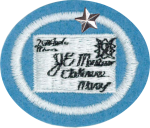
Skill Level: 3
Original Honor: 1933
Originating Institution: General Conference
Requirements:
1. Have the Stamp Honor.
2. Know the meaning of the following:
a. Cancellation
b. Perfins
c. Blocks
d. Plate blocks
e. Precanceled
f. First-day covers
g. Cachets
h. Souvenir sheets
i. Watermarks
j. Tongs
3. Make a display of at least 16 pages suitable for a stamp club show, Pathfinder Fair, or Junior Youth Philatelic Stamp Show. The display should be artistically arranged, neatly labeled, and mounted, showing careful thought and research. Cachets and covers should be used as well.
4. Make a collection of 750 additional stamps with at least 50 stamps from each of five foreign countries.
5. Name two different catalogs for identifying stamps.
6. Using a stamp catalog, identify and mount according to catalog number and country.
7. Mount your stamps with gummed hinges or plastic mounts. (Plastic mounts are preferred for mint stamps.)
String Art

Skill Level: 1
Original Honor: 1975
Originating Institution: General Conference
Requirements:
1. Describe the following: string craft, symmography, geometric stitchery.
2. Draw and stitch on cardboard in equally spaced points:
a. A right angle
b. An acute angle
c. An obtuse angle
3. Name three ways to prepare wood for string art.
4. Using stringing methods on wood, do four of the following:
a. Filled circle
b. Hollowed circle
c. Star
d. Edging
e. Curve from within
f. Curve from without
g. Filler
h. Wing weave
5. Complete one original string art hanging on wood for display.
Textile Painting

Skill Level: 2
Original Honor: 1956
Originating Institution: General Conference
Requirements:
1. Know the best types of material for painting and how to prepare them for painting.
2. Know how to trace and transfer a pattern onto the material.
3. How much time should be given for paint to dry?
4. Demonstrate the centering of patterns on the material.
5. Properly clean brushes after they have been used, or if using tube paints, properly care for tubes and tips.
6. Paint three different designs, using paint brushes on at least two, using the following techniques:
a. Highlighting
b. Shading
c. Fine line
7. Using a stencil, paint an item with at least two colors.
Thatching
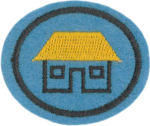
Skill Level: 2
Original Honor: UNK
Originating Institution: General Conference
Requirements:
1. Make a list of the various tools needed for thatching, stating their uses, and show a “dekspaan” and a “needle” you have made.
2. State what materials are needed in erecting the framework of a roof ready for thatching. Tell briefly how you go about erecting the framework of a rondavel.
3. Name the various materials required for thatching, including several kinds of thatching “grasses” and thatching “threads.” Show samples of these.
4. Answer the following questions on the preparation of thatching material:
a. When is the grass cut and how is it stacked for storing?
b. How is the grass ìcombedî and made ready for thatching?
c. How is thatching rope made? What raw materials are used in your locality?
5. a. Can any shape of the roof be thatched?
b. Which is the easiest roof to thatch?
c. What are some of the advantages of a thatched roof?
d. What are some of the things that damage thatch? How would you protect a thatched roof against such?
6. Have some practical knowledge on how to thatch and demonstrate ability in laying a few short rows of thatch.
7. a. How many workers are needed in thatching a rondavel?
b. Describe how you would start thatching a rondavel?
c. Tell, if possible demonstrate, how you would finish off:
(1) A round roof
(2) A gabled roof
Tie-Dye
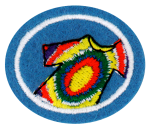
Category: Arts, Crafts, and Hobbies
Skill Level: 1
Original Honor: 2007
Originating Institution: North American Division
Requirements:
1. Know what the best types of materials are for dyeing and how to prepare them for dyeing.
2. Know what the purpose of the Soda Ash is and how long the fabric is to soak.
3. Know the purpose of the Urea that is mixed with the Dye.
4. What safety equipment should be worn when mixing up the dye for Tie-Dyeing? Why?
5. Determine what the three primary colors are.
6. Verbally describe what primary colors of dye will be needed to make the following secondary colors. Orange, Green, & Purple.
7. Verbally describe what the outcome will be if two secondary colors are mixed.
8. Use a Kleenex tissue & colored marker to demonstrate two different types of folds one could do on a T-shirt.
a. Bullseye
b. Stripes
c. Spiral
d. “V”
e. Random
9. Once you have seen the outcome of the different folds you have created on tissue, fold & dye an item for yourself. Bandana, t-shirt, pillowcase, etc… Always keep in mind, no two items will be identical, nor will they be perfect. Each item will be as unique as the individual who made it.
10. Wear or bring this item to the next meeting for your club members to see.
Tie-dye, Advanced

Skill Level: 2
Original Honor: 2015
Originating Institution: North American Division
Requirements:
1. Have the Tie-dye Honor.
2. Give a brief history of the art of tie-dye around the world.
3. Know how to make the following patterns:
Symmetric:
a. Crinkle
b. Stripes
c. Chevron
d. Pleats
Geometric:
a. Knot
b. Spiral
c. Rosettes
d. Circles
e. Sunburst
4. Make an article of clothing using a symmetric design and at least 3 colors.
5. Make a tie-dye article with a geometric shape dyed in the center.
Weaving
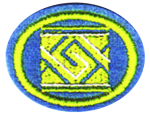
Skill Level: 1
Original Honor: 1938
Originating Institution: General Conference
Requirements:
1. Describe the principle involved in most weaving procedures.
2. Define the following:
a. Warp
b. Woof
c. Shuttle
d. Yarn beam
e. Heddle
f. Cloth beam
3. Make a cardboard hand loom on which an envelope purse can be woven.
4. Design and weave a table runner or towel, using at least three different colors.
5. Make a jersey looped potholder.
Whistles

Skill Level: 1
Original Honor: 2007
Originating Institution: North American Division
Requirements:
1. Relate briefly the history of whistle making and tell why whistles were invented.
2. Explain the importance of conservation in regard to whistle-making.
3. What do the seasons of the year have to do with making a willow whistle?
4. Name two (2) trees that make the best whistles and why. List three (3) other trees that can be used to make whistles.
5. Give a brief description of the following styles of whistles: a. Tube Whistles b. Pan Whistles c. Flute Whistles
6. Name five (5) types of modern whistles and their uses.
7. What modern musical instrument is a sophisticated whistle?
8. How does a whistle work?
9. What is the most common equipment used in making whistles?
10. Explain the importance of wood grain in whittling a whistle.
11. Why must the size of the holes and chamber be proportional to the amount of airflow?
12. How do you tune a whistle?
13. Demonstrate that you can make a two-handed whistle using your hand and a piece of grass.
14. Demonstrate the technique and try to accomplish a whistle using your hands (s) or fingers.
15. Review and demonstrate the proper first aid and safety rules for the usage of a pocketknife.
16. Know how to sharpen a pocketknife using a whetstone or oil sharpening stone.
17. Make the following whistles: a. Pan (Tubes) whistle b. Flute Whistle
18. Learn to play a simple song on each whistle you have made.
Whistles, Advanced
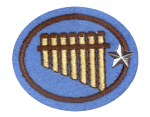
Skill Level: 2
Original Honor: 2007
Originating Institution: North American Division
Requirements:
1. Have the Whistle Honor
2. What is a sliding bark whistle and who first made this type of whistle?
3. What happens when a branch for making a sliding bark whistle is too large or too small?
4. What is a recorder whistle?
5. Make the following whistles: a. willow (sliding bark) whistle b. recorder whistle
6. Demonstrate your ability to correctly use each of the whistles you have made.
Wood Carving

Skill Level: 2
Original Honor: 1938
Originating Institution: General Conference
Requirements:
1. Explain the qualities of hard and softwoods and the best woods for wood carving.
2. Describe the different wood carving tools and explain how to sharpen them.
3. Explain the best methods of handling the grain of wood in designing.
4. Design and carve a plaque in low relief.
5. Design and carve two of the following items:
a. Whistle
b. Letter opener
c. Tray
d. Bookends
e. Clock case
f. Equivalent items of your choice
Wood Handicraft

Skill Level: 2
Original Honor: 1938
Originating Institution: General Conference
Requirements:
1. Identify at least five common kinds of wood, such as pine, walnut, oak, and cedar.
2. Know the characteristics for the woods identified, and know one use for each example.
3. What is the difference between hard and soft wood?
4. Know how to properly use the following tools in wood handicrafts:
a. Coping saw
b. Rasp
c. Plane
d. Knife
e. Chisel
f. Sanding block
5. Know at least two safety procedures for each of the above tools.
6. Cut out, assemble, and finish animal bookends or doorstop.
7. Cut out and finish a garden stake or lawn marker, using a design such as a child, bird, flower, or tree.
8. Make a plaque, tray, notebook cover, or some other useful object in which wood burning is used.
The Artisan Master Award is earned when the Pathfinder earns any SEVEN (7) honors in the Arts, Crafts, & Hobbies category.


